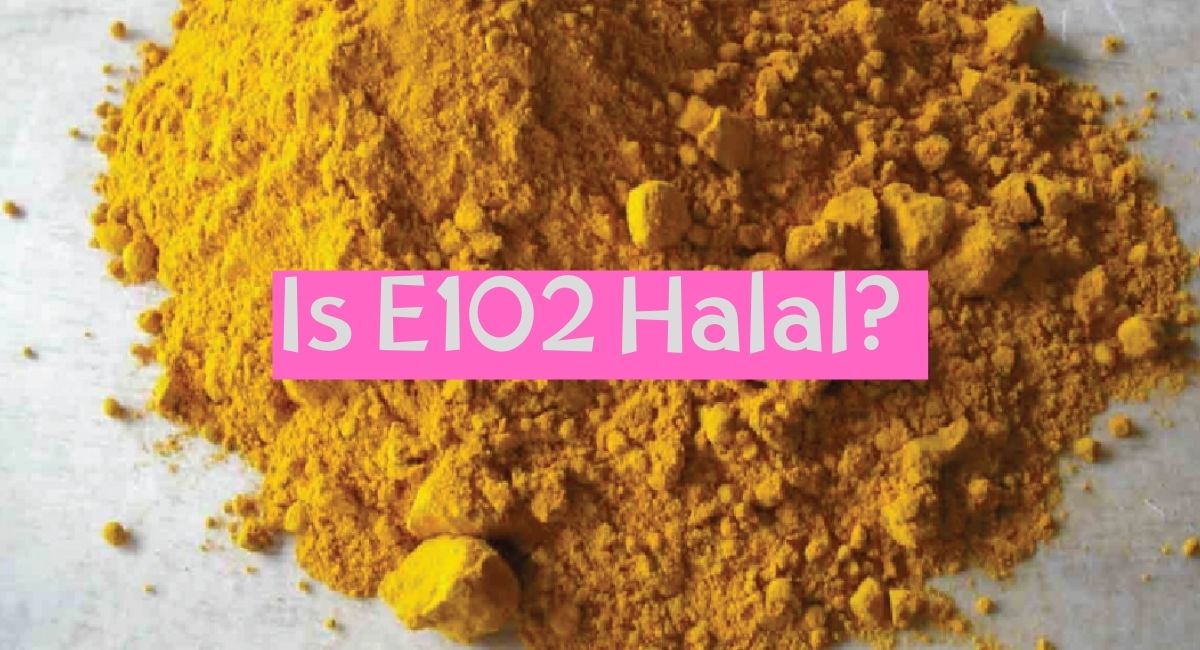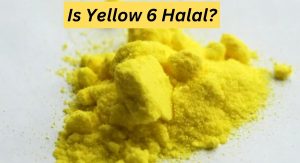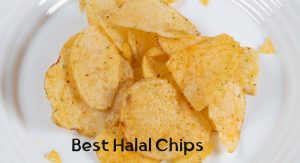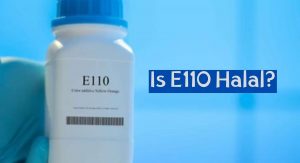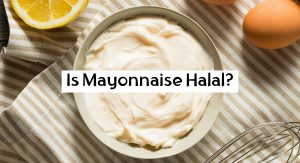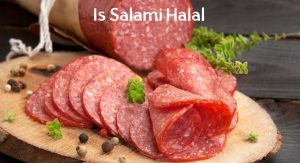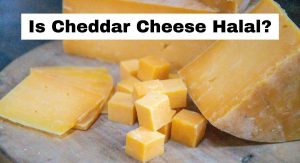In the world of food production, the use of additives has become a common practice. These substances are added to enhance the appearance, taste, and shelf life of various products. However, concerns regarding their safety and compliance with dietary restrictions have sparked numerous debates. Among these additives is E102, a vibrant yellow colourant that is widely used in the food industry. But is E102 halal? In this blog, we will delve into the intriguing world of E102, unravel its origins, and explore its halal status to provide you with a comprehensive understanding of this controversial additive.
What is E102 (Tartrazine)?
E102, also known as tartrazine or FD&C Yellow No. 5, is a synthetic lemon yellow azo dye. It belongs to a group of colour additives certified by regulatory bodies such as the Food and Drug Administration (FDA) and the European Food Safety Authority (EFSA). The primary purpose of E102 is to add an appealing yellow hue to various food and beverage products, including candies, soft drinks, cereals, and desserts.
However, despite its widespread use, E102 has faced scrutiny due to concerns over its potential adverse effects on human health. Some studies suggest that it may trigger allergic reactions and hypersensitivity in certain individuals, particularly those with a sensitivity to aspirin. Nonetheless, regulatory agencies have set specific safety limits for the use of E102, ensuring that its consumption remains within acceptable levels.
In addition to health concerns, the halal status of E102 has also been a subject of debate among Muslim consumers. Halal refers to food and beverages that are permissible according to Islamic dietary laws. These laws dictate the types of ingredients and additives that Muslims can consume. To determine whether E102 is halal, it is crucial to understand its source and production process.
The extraction and synthesis of E102 involve chemical procedures that may raise questions about its halal compliance. However, the general consensus among halal certification bodies and scholars is that E102 is halal. This conclusion is based on the fact that the primary sources of E102 are not derived from animals and do not involve alcohol, which is forbidden in Islam.
Nevertheless, it is important to note that the halal status of additives can vary based on their sources and production methods. Muslim consumers who adhere strictly to halal principles may choose to avoid products containing E102 altogether or seek specific halal-certified alternatives.
Ingredients Of E102
E102, also known as Tartrazine, is a synthetic yellow food colouring used in various food and beverage products. It is important to note that as an AI language model, I can provide general information, but it is always recommended to check the specific product packaging or consult official sources for the accurate and up-to-date ingredient list. Here is a list of ingredients commonly used in E102:
- Tartrazine (E102): This is the primary ingredient and the food colour additive itself. It is a synthetic yellow azo dye.
- Water: Used as a solvent or a base ingredient in many food and beverage formulations.
- Sugar: Commonly added to sweeten food products and enhance flavour.
- High-Fructose Corn Syrup (HFCS): A sweetener made from corn syrup. It is often used in processed foods and beverages.
- Artificial Flavors: These are chemically synthesized flavouring agents that mimic natural flavours.
- Natural Flavors: Extracts or essences derived from natural sources, such as fruits, vegetables, or spices, to provide flavour.
- Citric Acid: A natural acid found in citrus fruits, commonly used as a preservative or flavour enhancer.
- Sodium Benzoate: A preservative used to prevent microbial growth and prolong shelf life.
- Potassium Sorbate: Another preservative that helps inhibit the growth of fungi, moulds, and yeasts in food products.
- Stabilizers: Various stabilizers, such as gums (e.g., xanthan gum, guar gum) or modified food starch, are used to improve the texture, consistency, and overall quality of the product.
- Emulsifiers: These substances help maintain a stable mixture between water and oil-based ingredients in food products. Examples include lecithin, mono- and diglycerides.
- Antioxidants: Compounds like ascorbic acid (vitamin C) or tocopherols may be added to prevent oxidation and increase shelf life.
- Preservatives: Apart from sodium benzoate and potassium sorbate, other preservatives like sorbic acid or calcium propionate may be used to inhibit the growth of microorganisms.
- Salt: Common table salt (sodium chloride) is used to enhance flavour in many food products.
- Thickening Agents: Ingredients like modified corn starch, pectin, or carrageenan are used to provide texture and viscosity to products.
It’s important to remember that the specific ingredient list can vary between different products that may contain E102, so always refer to the product label or contact the manufacturer for precise information.
Determining the Halal Status
Source and Manufacturing Process: Tartrazine’s halal status hinges on its origin and the production methods employed. Unlike certain additives derived from animal sources, tartrazine is synthetically produced through chemical reactions. This aspect may lead some to assume that it automatically falls within the halal realm. However, the halal status of E102 is not solely dependent on its source but also on potential cross-contamination during the manufacturing process.
Cross-Contamination Concerns: To ensure the halal compliance of tartrazine, it is essential to delve into the manufacturing practices of the food industry. Cross-contamination may occur during production, where equipment used to manufacture tartrazine might also handle non-halal ingredients or additives derived from non-halal sources. As a result, trace amounts of non-halal substances could potentially taint the final product, rendering it non-halal.
E102 And Perspectives of Islamic Authorities
Islamic Organizations and Halal Certifications: Understanding the viewpoints of reputable Islamic authorities and halal certification organizations is crucial in determining the acceptability of tartrazine in halal diets. These organizations extensively analyze the manufacturing processes, sources, and cross-contamination risks associated with additives like E102. Their guidelines and rulings can serve as valuable resources to assess the halal status of tartrazine.
Varied Opinions: It is important to note that opinions on the halal status of tartrazine may differ among Islamic scholars and organizations. While some consider E102 to be halal based on its synthetic nature and minimal cross-contamination risk, others may take a more cautious approach, recommending further scrutiny or avoidance altogether. Familiarizing yourself with multiple perspectives can assist in making an informed decision that aligns with your personal beliefs.
Is E102 Halal Or Haram?
E102, also known as Tartrazine, is a synthetic yellow food colouring commonly used in the food industry. In determining whether E102 is considered halal or haram (permissible or forbidden) in Islamic dietary guidelines, it is necessary to consider the source and manufacturing process of the additive.
Halal guidelines dictate that food products should be free from any ingredients derived from haram (forbidden) sources, such as pork or alcohol. Since E102 is a synthetic food colouring, it does not originate from an animal source, which is a positive aspect from a halal perspective.
However, it is important to note that some scholars and Islamic certification organizations may have differing opinions regarding the permissibility of synthetic colourings. They may consider factors such as the manufacturing process, potential impurities, or any potential harm associated with the additive.
To obtain a definitive answer on whether E102 is considered halal or haram, it is advisable to consult reliable Islamic authorities or certification organizations that specialize in halal food products. These organizations can provide specific guidance based on their research, understanding of the manufacturing process, and interpretation of Islamic dietary laws.
It’s worth mentioning that the availability of halal-certified food products has increased in many countries, and consumers can look for halal certification labels on food packaging to ensure that the products meet the required standards.
Conclusion
In conclusion, the question of whether E102 is halal is one that requires careful consideration and analysis. E102, also known as tartrazine, is a synthetic food colouring commonly used in various food and beverage products. Its vibrant yellow colour can enhance the visual appeal of many consumables, but its halal status has been a subject of debate among Muslims.
When determining the halal status of E102, it is important to understand the source and production process of this food colouring. E102 is derived from coal tar, a byproduct of the petroleum industry. Some scholars argue that any substance derived from non-halal sources, such as petroleum, is automatically considered haram (forbidden) to consume. They believe that since coal tar is a non-halal source, E102 should also be considered non-halal.
On the other hand, there are scholars who argue that the transformation process that E102 undergoes changes its chemical composition to such an extent that it can be deemed permissible for consumption. They suggest that the intense processing and purification of E102 removes any impurities and renders it halal.
Ultimately, the halal status of E102 can vary depending on individual interpretations and rulings from religious authorities. Muslims who are concerned about consuming halal products should consult their local scholars or halal certification agencies to obtain guidance specific to their region.
